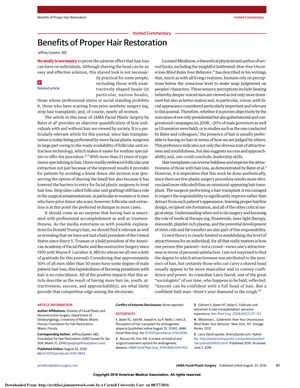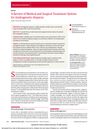Benefits of Proper Hair Restoration
August 2016
in “
JAMA Facial Plastic Surgery
”

TLDR Hair restoration can improve attractiveness and trustworthiness, but it should be done aesthetically; advancements in technology and medical therapies are making it more accessible and effective.
The document from 6 years ago, "Benefits of Proper Hair Restoration," discusses the societal perceptions of individuals with and without hair, and the benefits of hair restoration. The author, Jeffrey Epstein, MD, highlights that having hair is often associated with professional accomplishment and trustworthiness. He cites a study by Bater et al., which quantifies how individuals with and without hair are viewed by society. Epstein also discusses the advancements in hair transplantation, particularly the follicular unit extraction technology, which has made the procedure more accessible to non-hair specialists. He emphasizes that while hair transplants can improve attractiveness and reverse baldness, it is crucial that the procedure is done aesthetically to avoid unnatural results. The document also mentions the role of medical therapies such as finasteride, laser light therapy, minoxidil, platelet-rich plasma, and potential developments in stem cells and fat transfer in treating hair loss.





